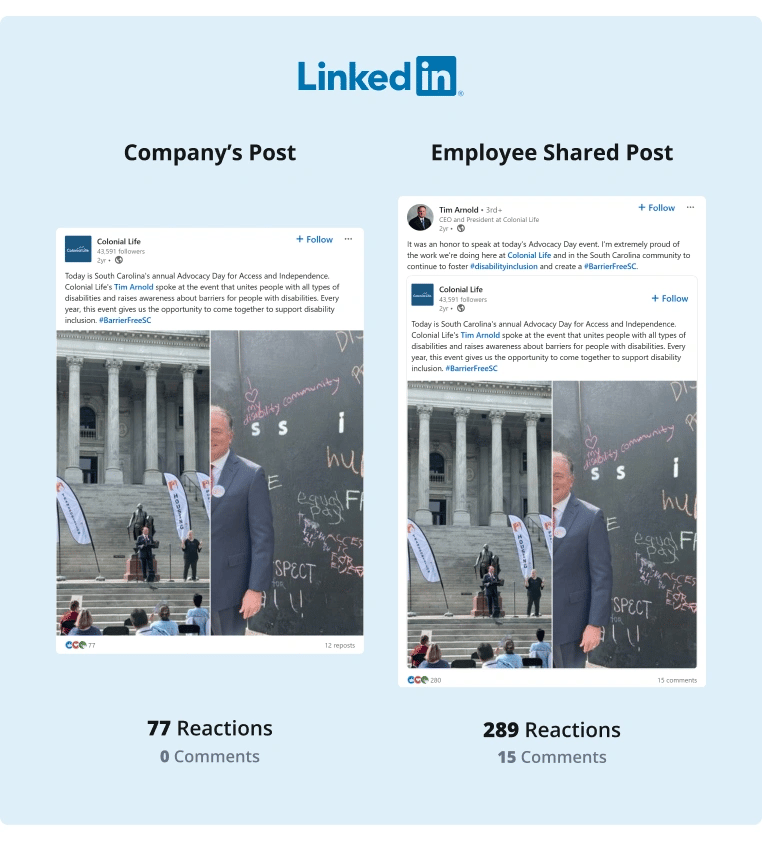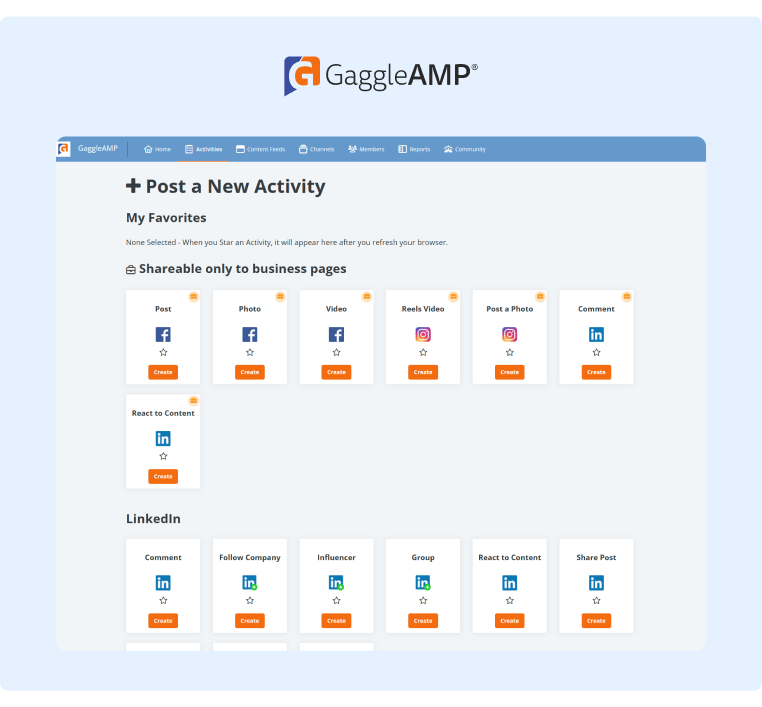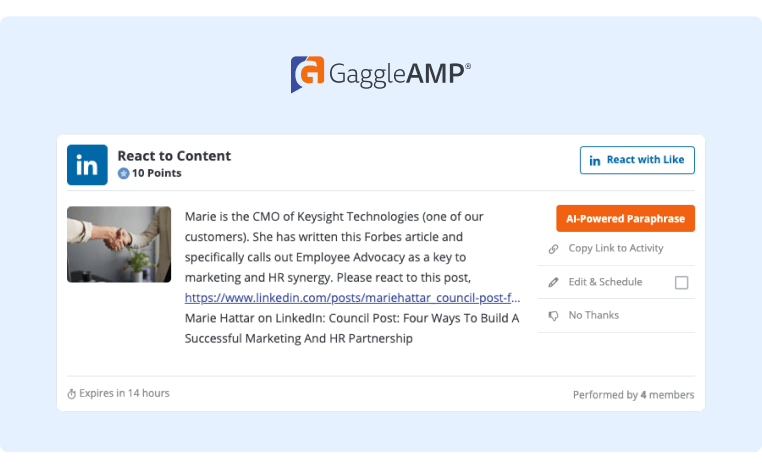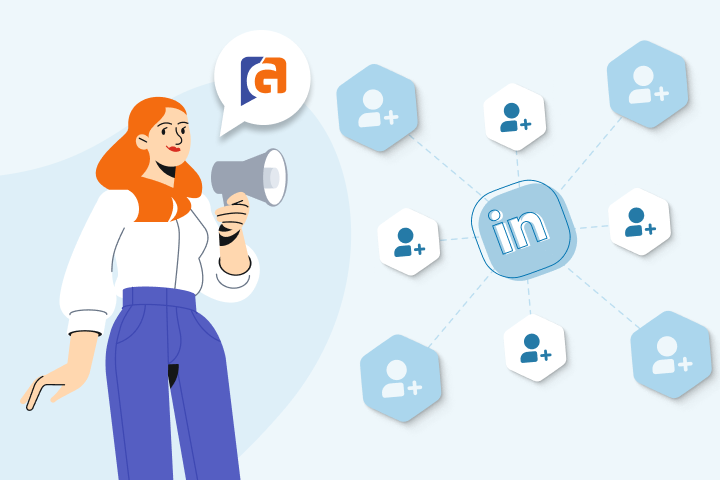How to Leverage Social Media for B2B
B2B brands can no longer view social media as a secondary, optional engagement channel. In today’s competitive online market, using social media for B2B business isn't just beneficial for B2B companies — it's essential.
The utilization of platforms such as Facebook, LinkedIn, and X for marketing purposes is no longer just a B2C trend. It’s time for B2B brands to recognize social media isn’t confined to only B2C businesses; social media is a powerful tool that supports B2B marketing objectives, too.
Social media for B2B marketing allows businesses to enhance their customer engagement and center on core B2B objectives like establishing credibility, increasing visibility, and tapping into new markets. Social media can be leveraged as a platform for thought leadership, networking, lead generation, customer feedback, and more. As a result, using social media for B2B business has become a mainstay in the toolbox of B2B marketers.
In this article, we’ll show you how to effectively leverage social media for B2B companies. We’ll also break down the benefits and potentials of social media for B2B, how to maximize lead generation and sales through B2B social media and share the main key performance indicators (KPIs) that you should be tracking.
Benefits and Potentials of Social Media for B2B
Too often B2B brands struggle to get social media buy-in from B2B executives who are wondering, “Why use social media for B2B?” But, by presenting executives with the benefits and potentials of social media for B2B, which are numerous, you can potentially change their minds.
Social media marketing offers B2B brands a platform to advertise new products/services and features, promote special offers, and connect with their customers. When a B2B brand engages with a customer on social media, there’s the potential to positively influence a customer's decision to buy from that brand. And, when that engagement comes from an employee, it’s viewed as more genuine and authentic.

Source: Chili Piper
Transforming your employees into brand ambassadors and tapping into their social networks has the potential to increase your brand reach exponentially, as well. For B2B executives concerned with getting employees onboard, implementing an employee advocacy program (and platform like GaggleAMP) can assist with getting employee buy-in by increasing employee participation and engagement through such tactics as gamification and rewards.
B2B brands can then effectively leverage employee advocacy across social media to drive more revenue, lower CPC costs, increase sales pipeline, attract top talent, and drive website traffic. And, that’s not all, using social media for B2B has additional benefits. The right social media for B2B marketing strategies can:
-
Increase Brand Awareness. Effective social media marketing can help B2B brands increase their brand visibility and recognition with their target audiences.
-
Offer Targeted Advertising. Social media platforms (e.g., Facebook, LinkedIn, X) offer brands the ability to drill down to specific demographics, interests, and behaviors when creating targeted advertising campaigns. For B2B brands, being more targeted helps you build your ideal audience, which increases leads and conversions, and ultimately, sales.
-
Provide Measurable Results. Social media platforms also offer analytics that provide brands with detailed insights into the performance of their campaigns and audience behavior. These measurable results can be analyzed and used to craft the best social media for B2B marketing campaigns.
-
Be Cost Effective. Social media marketing is cost-effective when done right. There’s no fee to create a social media account, and you can use social platforms for both organic social media advertising and targeted paid social media advertising.
These are just a few of the benefits of social media for B2B. Now let’s take a look at how to use social media for B2B, specifically lead generation and sales.
Lead Generation and Sales Through B2B Social Media
While social media is considered a top-of-funnel marketing channel, there are strategies you can use to generate leads from your B2B social media strategy. Here are some best practices for how to use organic social media for lead generation and sales:
1. Invest in the Right Social Platforms
For effective social media for B2B lead generation, use the right social platforms for your target audience. While a platform like TikTok might be great for engagement rates, it doesn’t necessarily translate into high-quality B2B leads.
Part of knowing how to use social media for B2B sales is investing in platforms where your audience and competitors are. For example, LinkedIn is consistently the best platform for B2B high-quality engagement and lead generation.

Source: Promoted Post by Databricks
2. Create Helpful, Valuable Content
High-quality social media for B2B business strategies include creating and sharing content that provides value (e.g., how-to guide, case study). Improving the quality of your LinkedIn content marketing strategy is essential for lead generation, as it spurs engagement and positions your brand as a valuable resource.
3. Research Your Competitors and Potential Prospects
Use social platforms (e.g., LinkedIn) to look at your competitors’ profiles and posts as well as potential prospects. This will help you determine what type of content to create, how often to post content, etc.
4. Track Keywords With Social Listening Tools
Track relevant keywords with a social listening tool (e.g., BrandMentions), which will send you alerts when those keywords are mentioned across social media platforms. This is helpful for social media B2B sales since it will enable you to find people who are actively looking for a product or service that your company offers.
5. Use Lead Generation Tools
Search for companies or individuals and use that information to make a list of ideal prospects. For example, LinkedIn Sales Navigator offers 40+ advanced search filters to get the right leads. Search filters range from basic to in-depth, enabling you to not only create leads lists to target particular audiences, but you can segment them as well.
6. Implement an Employee Advocacy Strategy
Employee advocacy is an excellent way to boost lead generation and sales through B2B social media. When your employees share and engage with company content on their social networks, they’re accelerating engagement and driving leads.
Here’s why: you’re more likely to purchase a product or service recommended by a trusted friend. It’s also an inexpensive lead-generation strategy since your employees have a vested success in the company.

7. Track Key Performance Indicators (KPIs)
Key performance indicators (KPIs) enable brands to track and measure social media campaign success and define quantifiable objectives. Lead conversion rates are the main KPI in social media for B2B companies.
However, it’s important to measure all of your key performance indicators (KPIs). These include website traffic, click-through rate, and engagement metrics, which will give you the big picture of how your social media campaigns are performing. If you have high engagement, but low conversion rates, you might need to refine who you’re targeting. Social media platforms offer analytics tools, or you can utilize third-party applications to track KPIs.
Now let’s take a look at B2B social media in tech and SaaS industries.
B2B Social Media in the Tech and SaaS industries
Social media has transformed the landscape of B2B marketing, especially in the tech and SaaS industries. Companies are utilizing platforms like LinkedIn, X, and Facebook to establish their brands, foster relationships, and generate leads.
The procurement journey can be complex and lengthy in the tech and SaaS industries. Here, social media provides an avenue to create narratives that simplify intricate products, showcase their practical applications, and highlight their benefits. With the right strategy, social media can drive meaningful conversations and build trust.
How to use social media for B2B marketing differs for tech and SaaS industries. Instead of using social media as a broadcasting tool, companies focus on creating meaningful dialogues. This involves creating content that answers prospects' questions, addresses their challenges, and engages them in constructive conversations. Even more, beyond posting company updates, tech and SaaS companies can use social media for B2B marketing to share valuable information related to their industry and thought leadership articles.
Professionals in these sectors are always looking for ways to stay updated with industry trends, develop their skills, and do their jobs better. Sharing such information can establish your company as a thought leader, foster relationships, and build trust with your prospects. This positions social media for B2B SaaS as an invaluable resource in reaching and engaging with the target demographic.

Source: Chris Walker
By utilizing analytic tools, these businesses can identify the social platforms most frequented by their target audience, gain insights into their online behaviors, and optimize their social media strategy to achieve maximum reach and engagement.
Clearly, social media for B2B technology companies is a valuable tool for driving engagement and generating leads. Now let’s take a look at how an employee advocacy program can give your brand’s social media strategy a competitive edge.
Implementing B2B Social Media With GaggleAMP
To truly capitalize on the power of social media, B2B brands need to implement an employee advocacy program. Here’s why: social media for B2B marketing communication needs to be viewed as authentic and genuine. Branded messages and engagement that come from your employees will always be viewed as more trustworthy.
However, getting employees to engage isn’t easy. There’s the issue of not enough time, or not knowing what to say. But, using an employee advocacy tool like GaggleAMP can help streamline the employee advocacy process and make it easier for employees to participate.
Here’s a quick overview of how it works:
Step 1: Select an Engagement Activity
Select one of the many engagement activities. Each activity is categorized by platform (LinkedIn, Instagram, Facebook, X), and then select the specific engagement action (like, comment, share, etc.).

Step 2: Fill Out the Engagement Activity
Next, add a link to a specific post that you want your employees to engage with. You can also leave instructions on what they should say in the post. Our AI-powered paraphrasing can help you create unique, pre-written text for each employee. Then, add a due date and assign it to a specific employee or group of employees (e.g., marketing team).

Step 3: Employees Receive an Engagement Notification
Once you assign an engagement activity, employees receive a notification that they have an activity waiting. They can log into their personal Gaggle and see all of the engagement activities that you’ve assigned plus the instructions and/or pre-written text.
Step 4: Track Performance and Engagement
Track the performance of your employee advocacy program in our analytics dashboard. Here, you can see data insights including which types of content are resonating and which employees generated the most engagement. Don’t forget to reward the most engaged employees for their efforts.
Ready to Leverage Social Media for B2B?
GaggleAMP can help supercharge your B2B social media marketing strategy. Through the power of employee advocacy, you can boost brand awareness, generate quality leads, and increase conversion rates. To see GaggleAMP in action and get started, schedule a demo today.










